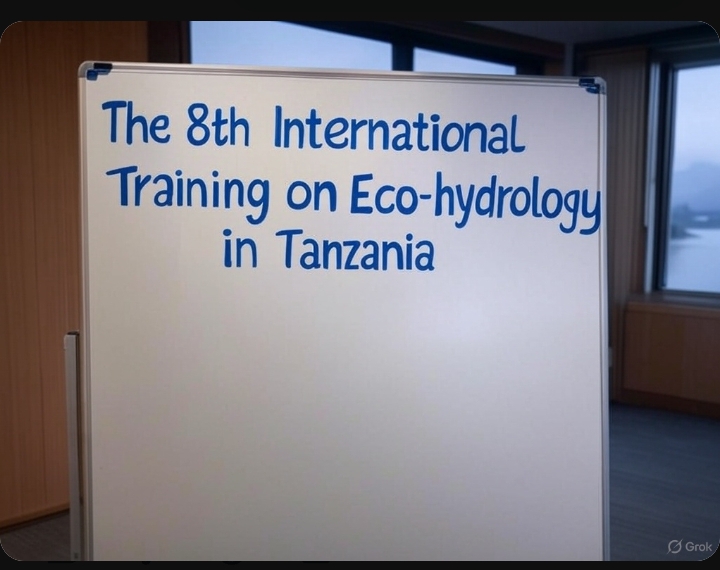- carbon pricing is the value ascribed to the external costs – usually social costs – of pollution emitted by an industry. The price on carbon emissions is applied either through a carbon tax or an emission trading system.
- Carbon tax is the price that governments impose on polluters for each metric ton of carbon dioxide emissions generated.
- Carbon trading is a market-based approach in which each polluter is allotted a specific quota or allowance of pollution that it can emit. Polluters are then allowed to trade these permits with each other.
In the 1920s, a British economist, Arthur Pigou, highlighted the social benefits of making industries pay for the costs of the pollution they caused. In time, this concept was taken up in different ways, which have led to the concept of ‘carbon pricing’.
According to the World Bank, carbon pricing is the value ascribed to the external costs of pollution emitted by an industry. External costs are those that do not affect the industry itself directly – most industries receive the full benefits of fossil fuel consumption, but only bear a trivial fraction of its climatic cost. Instead, public systems pay a socially tragic price – such as the costs of losing crops because of poisoned air/water and health care costs because of heat/cold waves or extreme weather events from global warming.
Carbon pricing is an economic tool used to push industries, households and governments to bring down emissions and invest in cleaner options. It helps in shifting the burden of damage caused by pollution onto those responsible for the pollution but does not dictate how or where emissions can be reduced. Instead, it puts an economic value to pollution and allows polluters to decide whether to reduce emissions or continue polluting but pay the price for it.
Carbon pricing/taxes/trade are under the control of a country’s government. The government decides what taxes to levy and polluters pay these taxes to the government. Ideally, these taxes should be used to either offset the extra burden of carbon taxation on low-income groups or on remedial projects to offset the effects of pollution.
Why a price on carbon?
Carbon is priced because carbon-based gases (of which carbon dioxide or CO2 is most prevalent) are the most abundant greenhouse gases (GHGs) in most emissions. Therefore, pricing carbon provides an incentive for households, firms, industries, and governments to reduce emissions cost-effectively.
According to the latest Intergovernmental Panel on Climate Change (IPCC) report (March 2022), the window of action for meeting the goals set by the Paris Convention (a reduction in GHG emissions such that global warming is restricted to 1.5–2 degrees C above pre-industrial times) is rapidly closing. The report, titled Impacts, Adaptation, and Vulnerability states that without immediate action, rising global temperatures and climate change with create conditions beyond human tolerance.
Currently, the price on carbon emissions is applied in two ways; one is through a carbon tax, and the other through a cap-and-trading or emission trading system (ETS).
What is carbon tax?
Carbon taxes are the prices that governments impose on polluters for each metric ton of CO2 emissions (mt CO2e) generated. These taxes are levied on coal, oil products, and natural gases, according to their carbon contents. The advantages of levying carbon taxes are many. By internalising the externality of pollution costs, the tax motivates industries to improve energy efficiencies, move towards low-carbon fuels and renewable energy sources. The concept of carbon taxation can also be applied to other GHGs and pollutants. In addition, carbon taxes are fairly easy to administer as add-ons to already existent fuel taxes and generate revenue for governments that can be routed towards funding other aspects of the sustainable development goals.
Carbon taxes are, however, are not problem-free. One of the main arguments against carbon taxes is that they make fossil fuels more expensive, which will disproportionately affect people of lower income groups. In addition, carbon taxes may discourage investment and economic growth as businesses may shift production into countries without carbon taxes. Another issue with carbon taxation can centre on how the revenues collected from the taxes are utilised – should they be used towards alleviating tax burdens on workers due to rising fuel prices or towards repairing environmental degradation? Finally, the administrative costs of monitoring and measuring emissions, and uncertainties in measuring the social costs of carbon pollution can make carbon taxation a difficult task.
Individuals and households bear the brunt of carbon taxes when the price of the tax – which is usually directly levied on an industry – trickles down to consumer prices.
What is carbon trading? What are carbon credits?
Carbon trading is a market-based approach to pricing carbon emissions by putting a cap on or limiting the total amount of carbon-based pollution that can be produced. In this system, a central authority, in most cases, governments, allocate or sell a limited number (set as a cap) of permits that allow a specified amount of emissions over a period of time. In this system, each polluter is allotted a specific quota or allowance of pollution that it can emit.
However, polluters are then allowed to trade these permits with each other. For example, if a polluter manages to reduce its carbon emissions to levels lower than its assigned permit values, it is allowed to sell the right to emit carbon to another polluter which may be producing more emissions than it has permits for.
A carbon credit is a generic term for a tradeable certificate or permit representing the right to emit a certain amount of CO2 (usually 1 metric ton) or an equivalent amount of different GHGs. It is, in a sense, the basic trading unit for carbon markets.
The carbon trading market was set up in 1997, after the Kyoto Protocol was signed. Under this protocol, all participating countries were to set and adhere to a limit on their carbon emissions over a series of commitment periods. However, the protocol also allowed countries to trade emissions permits with each other. Apart from these permits, other tradeable carbon commodities could also be used, including carbon removal units (from activities such as reforestation), emission reduction units, and certified emission reductions (from clean development mechanism projects).
The prices in cap-and-trade schemes, which use carbon credits, are market driven (meaning that their prices vary according to demand and supply), although the government controls how many units/credits are allotted to each industry/stakeholder, and so how many credits are available for sale on the whole.

Criticisms of the carbon pricing system
Currently, the Environmental Defense Fund states that the cap-and-trade system is the most “economically and environmentally” sound approach to limit emissions and mitigate global warming. This is because the cap sets a firm limit on pollution and trading encourages cutting emissions in the most cost-effective manner.
However, there are several arguments that have been put forward (apart from the issues on carbon taxation) to highlight that carbon pricing, including carbon trading is insufficient to mitigate climate change. These arguments point out that carbon pricing places more importance on increasing efficiency than on effectiveness and encourages optimisation of existing systems rather than on transforming them to reduce pollution. Furthermore, it has been pointed out that current issues with emissions are a fundamental systemic problem of society, and not just a market problem; therefore, they will require more than just a ‘price on pollution’ to overcome.
“First and foremost, one must remember that carbon pricing, especially carbon taxation, is a tool to make cutting carbon emissions more economical – it is not necessarily a tool to cut the total amount of carbon produced”, says Nandan Nawn, a professor at the Department of Policy and Management Studies, TERI School of Advanced Studies and a member of the Biodiversity Collaborative.
“If we take the example of pollution from cars, a tax may not incentivise the owner-users to reduce the use of fossil fuels. After all, in urban areas, owning and using many cars is more of a status symbol, just like owning land in the rural areas. There are just too many incentives – EMI (equated monthly installment) is the most important – that fits nicely with this ‘aspiration’. For most users, fossil fuel is an ‘essential commodity’ and the quantum of its use is independent of price changes. On the other hand, making the emission standards stricter has the potential to reduce the pollution emitted by a running engine per unit of time. But according to ‘Jevons Paradox’ or the ‘rebound effect’ (expounded by William Stanley Jevons at the House of Commons two and a half centuries ago), if the rise in car numbers increases at a rate higher than the rate at which emissions are reduced, total emission will increase. There are no easy solutions here, given the political economy of carbon in India,” Nawn explains.
In addition to these issues, unlike how the cap-and-trade program drove innovations to reduce sulfur dioxide emissions from power plants, the rise in technological innovations for reducing carbon emissions have not met with the same success. Although there is some evidence that innovations in low-carbon technologies are being driven by the European Union’s ETS (EU ETS) and China’s ETS, there are doubts that this will help in driving climate change mitigation at the desired rate.
What is the current rate at which carbon is priced?
According to The World Bank’s Global Carbon Pricing Dashboard as of April 2021, global carbon pricing initiatives range from less than $1 to as high as $137 per mt CO2e. There are currently 65 carbon pricing initiatives across 45 national jurisdictions. In 2021, these initiatives would cover 11.65 Gmt CO2e, which represents 21.5% of the global GHG emissions. However, less than 1% of the global emissions (5 out of 65 initiatives) are currently priced at close to or above the least estimated social cost of carbon, which, according to the IMF, is 75 USD per mt CO2e. A publication in 2021 in the journal Environmental Research Letters, places the social cost of carbon at a whopping >3000 USD per mt CO2e if climate-economy feedbacks and temperature variabilities are taken into account. As of November 2021, the average weighted price of carbon stood at 3.37 USD per mt CO2e.
How does carbon pricing work in India?
Currently, India does not have any explicit carbon pricing or cap-and-trade mechanisms; instead, it has an array of schemes that place an implicit price on carbon. The Perform, Achieve and Trade (PAT) scheme aims to reduce emissions from energy intensive industrial sectors by setting specific energy reduction targets. Industries that exceed the targets are awarded Energy Saving Certificates (ESCerts), each of which is equal to one metric tonne of oil. Those industries unable to meet the targets are required to buy ESCerts (from units that have exceeded their targets) through a centralised trading mechanisms hosted by the Indian Energy Exchange.
The Coal Cess is a tax on coal that was introduced in 2010, which aimed to use the collected revenue to finance clean-energy initiatives and research via the National Clean Energy Fund. However, the idea failed to achieve significant outcomes as a large part of the collected revenue remained unutilised. In 2017, the coal cess was abolished and replaced by the Goods and Services (GST) Compensation Cess; the proceeds of this tax are used to compensate states for revenue losses due to a shift to the new indirect tax regime.
Renewable Purchase Obligations (RPOs) and Renewable Energy Certificates (RECs) are aimed at encouraging India’s growing renewable energy sector. All electricity distribution agencies are required to source a specific minimum of their electricity requirements from renewable energy sources. For each state, the RPO is fixed and regulated by the respective State Electricity Regulatory Commission. The RECs are market-based instruments that aid in achieving RPOs through trading at power exchanges.
Internal Carbon Pricing is a tool used by the private sector in India to reduce emissions voluntarily, so that they can channel investments into cleaner and more energy-efficient technologies to meet corporate sustainability goals. Currently many major Indian private companies such as Mahindra and Mahindra, Tata, Infosys, and Wipro, use ICP to lower their carbon footprints.
Can I participate in carbon trading?
Households and individuals at this stage, cannot directly participate in carbon trading, as carbon emissions calculations at such small scales are not very accurate. Households may be part of a larger trading scheme, where the carbon emissions of an area – for example, an entire city – are calculated, and used as measures to note increases/decreases in carbon emission profiles. The main issue with the carbon credit system currently, especially for small businesses or individual land holders, is that agencies that provide credentials for and evaluate carbon credit generation, charge very high fees, which may not be offset by the income generated from selling the carbon credits themselves.




